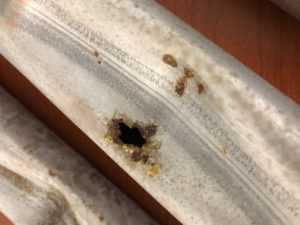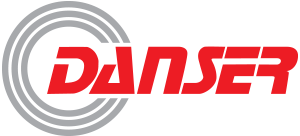The importance of inspecting residential and commercial gas furnace heat exchangers

Compromised heat exchanger from gas furnace
Changing seasons and cooler temperatures mean a lot of us will be turning on the heat in our homes and businesses soon. While it is easy to set it and forget it, it is very important to inspect your heat exchanger if you have a gas furnace. The pictures below are of compromised heat exchanger tubes that would pose a significant risk if not replaced. Don’t let it happen to your family or business. Take the time to inspect.
What are heat exchangers?
Heat exchangers are the components of gas furnaces that heat the air flowing through. They use a set of tubes that are heated by the combustion chamber. Air is blown across the surface of the heated tubes, heating the air being directed into the home or building.
Why do heat exchangers need to be inspected?
Because the combustion chamber creates a mixture of gas and fumes that are not safe to breathe, it is essential to ensure the heat exchanger does not have cracks or leaks. Heat exchangers can be susceptible to these types of failures as the metal expands and contracts, becoming brittle after years of use. When cracking or leakage occurs, carbon monoxide, sulfur dioxide, and nitrous oxide could flow into your home or building. These dangerous gases

Hole in failing heat exchanger
can cause life threatening illness.
What are the signs of a failed heat exchanger?
- Unexplained illness: Headaches and other flu-like symptoms have been linked to gas leakage. These symptoms may indicate a furnace inspection is needed, especially if strange smells are detected. Carbon monoxide sensors can also detect leaks.
- Soot: Black buildup on the interior of the furnace could indicate a cracked heat exchanger.
- Water: Finding water on the floor in the area of your furnace can be a sign of a failed heat exchanger.
- Furnace corrosion: Seeing degradation on the exterior of the furnace can be a sign of failing internal components, including the heat exchanger.

This type of corrosion is a sign dangerous gases could be leaking into your home or business
Steps you should take:
- Contact a licensed HVAC contractor.
- Have them complete an annual furnace inspection.
- Have them repair/replace any failing components.
- Repeat the process every year to keep your family and business safe.
